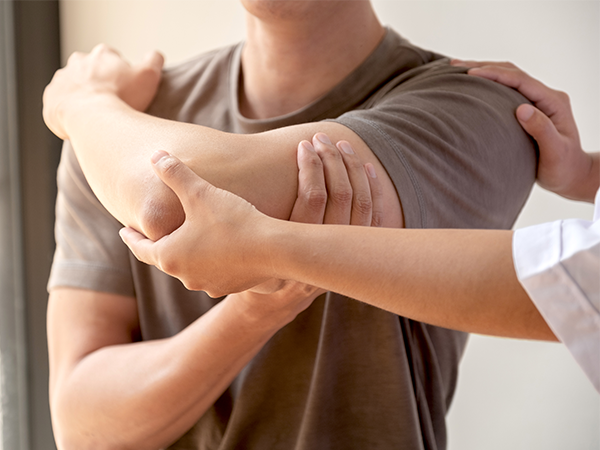Shoulder Conditions: Too Tight, Too Loose and Impingement
Posted by Enovis ANZ on 27th Sep 2023
For many, the new normal has come to include working from home. However, anecdotal evidence suggests a growing number of homeworkers are also having to learn to live with shoulder injuries as a result of postural problems.
With much of the shoulder joint’s strength coming from the surrounding muscles and tendons, increased stress placed on this area when sitting

slumped at a poorly configured workstation can lead to painful and debilitating shoulder injuries. It is this situation that some physiotherapists are attributing to an increase in the number of patients they are seeing presenting with shoulder conditions.
While exercise and posture correction will always form the foundation of shoulder rehabilitation, practitioners should be aware of a number of electrophysical agents available to help improve outcomes for their patients.
Common shoulder conditions
While exercise and posture correction will always form the foundation of shoulder rehabilitation, practitioners should be aware of a number of electrophysical agents available to help improve outcomes for their patients.
Too tight: what is adhesive capsulitis?Adhesive capsulitis, or frozen shoulder, is a condition whereby the movement of the shoulder becomes limited. Accompanied by strong pain, the condition occurs when the connective tissue surrounding the shoulder joint becomes inflamed, negatively affecting its normal elasticity. It can result from injury or following surgery. While frozen shoulder can resolve itself within 2-4 years’ time, the associated pain and loss of movement mean patients often seek a more expedited remedy. |
Too loose: shoulder instabilityWhen the ligaments and other materials in the area surrounding the shoulder joint are damaged there is an increased possibility for subluxation or dislocation to occur, whereby the humerus either partially or completely moves out of the joint. Generally there are two main reasons why shoulders become unstable: either because of structural damage from major or repeated minor trauma, or as a result of muscle imbalances. Other than surgery, the way to treat this instability is by strengthening the muscles that support the shoulder through physiotherapy. |
Shoulder impingementsSubacromial impingement syndrome, or shoulder impingement, is a condition involving the inflammation of the shoulder tendons, and has been referred to as the most common reason for shoulder pain1. Treatment of impingement syndrome involves managing the pain in order to allow strengthening exercises and posture correction to be performed. |

Patients are more likely to comply with rehabilitative exercise when the associated pain is managed, and this is where technological adjuncts can provide non-invasive treatment options. The modern therapist is presented with a range of electrophysical agents that can be used to facilitate their patient’s exercise regime and speed recovery.
Treatment Options
Low level laser therapy
While low level laser therapy (LLLT) has been shown to be effective in reducing pain in adhesive capsulitis2, because of the amount of time it takes to deliver the required therapeutic dose, it is not considered practical.
For example, even using an applicator with a cluster of 9 laser emitters, the average time to treat a shoulder would be over 30 minutes, which is longer than the duration of most physio appointments.
LightForce Laser therapy (photobiomodulation)
Although LLLT lacks the power to treat deep-seated conditions affecting large areas efficiently, high power laser (HPL) devices have no such problem. The increased power of these devices (measured in watts, compared to the milliwatts of LLLT devices) means pain relief can be administered to the affected shoulder in a matter of minutes, allowing the remainder of the physio session to focus on rehabilitative exercise.
HPL has been shown to be effective for reducing pain and improving mobility when treating shoulder impingement 1,3.
Extracorporeal Shockwave therapy
Both focused shockwave (F-SW) and radial pressure wave (RPW) therapy have been shown to reduce pain and improve function in chronic calcific shoulder tendinitis 4,5, a form of shoulder impingement where calcium deposits within the rotator cuff cause discomfort and loss of movement.
The results of F-SW and RPW therapy in treating frozen shoulder are also positive, with studies demonstrating quicker return to daily activities, and quality-of-life improvement 6,7.
NMES
Neuromuscular electrical stimulation (NMES) can help improve range of motion by supporting the role of exercise in increasing muscle strength and control. Its use in cases of shoulder instability has shown positive results 8,9, where patients were able to freely move the affected arm without signs of instability or accompanying pain.
It is also a useful tool for treating scapula instability, where it can be used to address hypertonia and disuse atrophy in the surrounding trapezius muscles 10.